Old Amana Vegetables
~WE ARE SORRY TO INFORM YOU THAT OUR SEED BANK HAS BEEN PERMANENTLY CLOSED ~
About our 100-year-old vegetable garden
We garden organically and no-till. When we sow seeds, we simply lay out a row of compost and sow directly into it. The easternmost part of the garden contains our seed bank. Here we have rescued vegetable varieties that were brought from Germany by the Amana people and raised in their communal kitchen gardens. My wife Wilma and I are both native Amana folks, but we left Amana when we went to college, never thinking that we would return. Upon our return in 1977, we soon discovered that these wonderful old vegetable varieties were grown only in elderly ladies’ home gardens and would disappear forever, once the ladies were gone.
More on Amana history and gardening here: https://cottageinthemeadow.plantfans.com/BlogPosts/GARDENING_THE_AMANA_WAY
THE_SHIPPING_CALCULATOR_FOR_SEED_ORDERS_IS_NOT_WORKING. PLEASE DISREGARD THE SHIPPING TOTAL. SHIPPING FOR SEED ORDERS IS $2.00 per order.
Our seeds are processed for us in mid-April by a local 4-H group. Seeds for the year will NOT BE AVAILABLE until they have been processed.
Amana Radish (Vielfarbiger Rettich)



Amana Radish (Vielfarbiger Rettich)
$2.00 Seed Packet
Available
Amazing in its variability, the "Multicolored Radish" is a fun radish to grow, because the grower never knows with certainty what (s)he will be harvesting. Its color ranges from purple to red to white. The size is highly variable as well. Some radishes will be small and round, others of medium size with irregular shapes, and yet others quite large and sometimes carrot-shaped.
Culture is identical to that of other radishes. It can be sown quite early in spring (cover to thickness of seed), when nighttime lows still dip slightly below freezing. It goes to seed rather quickly and has a tendency to self-sow, so that a second harvest in the fall is often possible without any additional effort on the part of the grower. Seed stalks can be harvested when some of the individual seed capsules on the stalk have turned a light tan color.
Storing quality is unsurpassed. In some Amana families Vielfarbige Rettich are a New Year’s Day tradition. If stored in the crisper drawer of a refrigerator, they will be as fresh and crisp on that day as they were the day they were harvested.
As far as we know, this variety survives only in Amana gardens and among the gardeners who have purchased our seed.
more informationAmana String Bean (Grüne Bohnen)

Amana String Bean (Grüne Bohnen)
$2.00 Seed Packet
Available
Typical of many European varieties, this green string bean is flat, as opposed to its rounded American counterpart. Flavor is delicious and much superior to that of any American rounded variety. Culture is identical to that of other green bean varieties (sow to thickness of seed after danger of frost has passed). Plant rows 4-5 feet apart, as plants have a greater tendency to vine than most American varieties. Seeds may be harvested in late summer or fall, after the pods have lost their green color. Other varieties of green beans should not be grown in the same garden (or should be planted as far away as possible), if seed is to be harvested.
more informationCeleriac (Knollecellerie)

Celeriac (Knollecellerie)
$2.00 Seed Packet
Available
Celeriac, or "Root Celery," is still a popular vegetable in Europe and has enjoyed increasing popularity in the U.S. as well. It is a celery that is grown not for its stalks, but for its bulbous root, which has a mild, pleasing celery flavor and is used raw in salads or cooked in soups. The stalks are small, strong-tasting, stringy, and generally unpalatable. If finely chopped, they may be used to flavor soups and other dishes.
Culture is slightly different from regular celery, in that some effort must be put forth in order to harvest a reasonably large bulb in the fall. Plants must be kept well-watered, especially during dry summers. Outer stalks are removed periodically in order to encourage large bulb formation. Bulbs store well after harvested, a definite advantage for pre-1932 communal kitchen cooks. (Plants usually do not produce seeds the first year and are not winter hardy in Iowa, so new seed must be purchased each year. “Large Smooth Prague” is generally the variety of choice.)
more informationCitron Melon (Zitter)
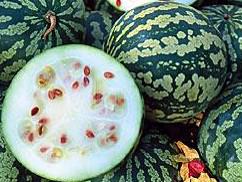
Citron Melon (Zitter)
$2.00 Seed Packet
Sold Out
Looking for all the world like miniature watermelons, citrons are bound to disappoint anyone who attempts to eat one raw. The flesh is hard, white, and practically tasteless. Citrons are eaten primarily in a pickled form, with the dominant flavoring usually that of cloves and cinnamon. The vines are also quite similar to watermelon, as is this plant's culture. When processing citron, save the seeds, dry them, and plant to thickness of seed when the weather turns warm in late May or early June.
Though grown in Amana gardens, Citron Melon is not a variety peculiar to Amana. Seed is available commercially in the United States, e.g. from Stokes Seeds, Buffalo, NY.
Ebenezer Onion
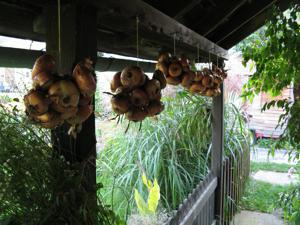
Ebenezer Onion
$2.00 Seed Packet
Available
A popular onion in the Northeast and Upper Midwest because of its winter keeping qualities, it was introduced by the Amana Inspirationists during their sojourn at Ebenezer, New York. Oral tradition has it that huge surpluses in the Ebenezer kitchen gardens resulted in the sale of this onion on the nearby Buffalo, NY, market. Its popularity was quickly established because of its superb keeping qualities over winter. It is occasionally still available through such well-known firms as Burpee Seeds. Whether its counterpart in Germany still survives is not known.
Culture is identical to other varieties. (Onion production is a three-stage process. Mature onions planted in spring produce seed, which is harvested in summer. The following spring, the seed is planted to its thickness and produces small onions called “sets.” These are harvested in late summer and stored in a cool, dark place over winter. Sets planted the next spring produce mature onions.) The mature onion is yellow, of medium size, and has a semi-mild flavor.
Eiersalaat ("Egg lettuce")
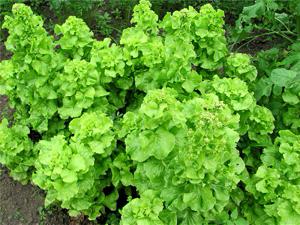
Eiersalaat ("Egg lettuce")
$2.00 Seed Packet
Available
This unique leaf lettuce variety is known locally as "egg lettuce," because it was usually served in communal kitchens with bits of chopped hard-boiled egg in the dressing. When young, the leaves are almost completely yellow in color, very tender, with a slight buttery flavor and texture. Other advantages include heat resistance, slowness in bolting, and delayed development of bitterness.
Culture is identical to other lettuce varieties. (plant to thickness of seed in early spring) Seed stalks may be harvested after they begin to turn brown. Left in the garden over winter, this lettuce often self-sows in the spring.
Ground Cherry (Kapsultomättes)

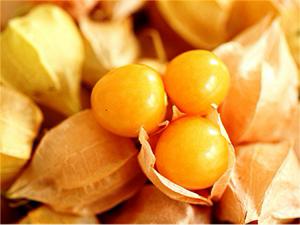
Ground Cherry (Kapsultomättes)
$2.00 Seed Packet
Available
Kapsultomättes ("capsule tomato") is a native American variety which volunteers in gardens with such ease that it can quickly become a weed. Amana folks grew it for use in pies and in Kapsulgelèe, a delicious jam which incorporates fresh lemon peel.
A member of the nightshade family, ground cherry culture is similar to that of tomatoes, except that plants grow fairly close to the ground and don't need staking or caging. Fruit and seed are harvested when the husk ("capsule") turns brown and drops to the ground. It is not particularly palatable when eaten raw.
Schwarzwurzel (European Black Salsify)
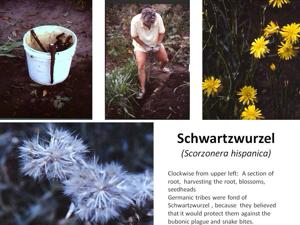
Schwarzwurzel (European Black Salsify)
$2.00 Seed Packet
Available
Schwarzwurzel ("black root") is still a popular vegetable in German gardens today. Amana folks prepared it by scraping the black skin from the root (in carrot fashion) and simmering it in water or stock, perhaps with onions added, the liquid being thickened to a sauce before serving. The flavor is unique, mild, and delicious. It is quite unlike the American salsify or "oyster root."
Sow in spring and cover to thickness of seed. Roots will be ready to harvest in fall before the ground freezes. At the grower's discretion, roots may be left in the ground to winter over, providing both seed and a larger root the following year. The seeds are harvested when a fluffy down appears on the seed head. It's a good idea to cover the seeds before the fluff unfolds, as birds love them, especially goldfinches.